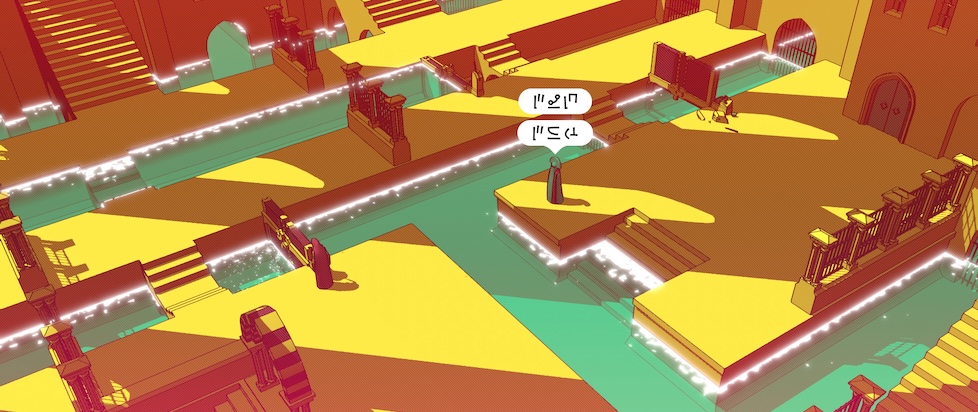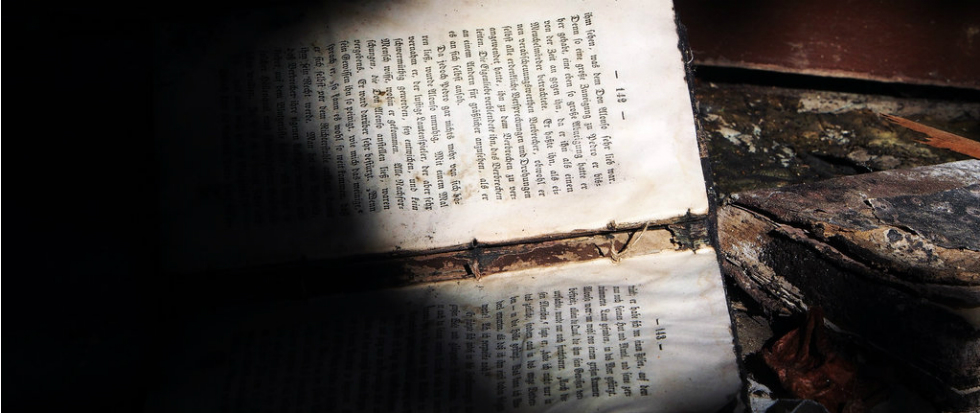
The Communities Found Within Chants of Senaar
As the pyramid rises above the tower that composes the setting of indie studio Rundisc’s Chants of Sennaar, the people of the game’s cultures stand side-by-side, realizing that their differences merely came down to communication errors. Members of each society – Devotee, Warrior, Bard, Scientist, and Anchorite – realize that they all hold the same values, just with different names. The climax of the puzzle game communicates the main theme of its story: despite language barriers, people are people, and we all have something in common. While the people of the tower all start the game at odds with each other, unable to communicate, the player learns each language, becoming a translator. The player teaches each community through translation that their neighbors love the same things, such as music, art, and religion. While it may be more commonly recognized that players should take this message outside of the contexts of the game, the way Rundisc makes this even more effective is ingenious, though it may fly over players’ heads. As a linguist researcher and student, it was more apparent to me. Many of the grammatical components of the fictional languages that may seem strange to English speakers are in fact components of real-world languages.
Let’s start at the bottom of the tower, with the Devotees. They seek God and devote themselves entirely to that search, wanting to climb to the top of the tower, where they believe God is. The Devotee language has several linguistic components to it that are used in real languages. One of the more discernible examples is the fact that Devotees repeat a word to make it plural. For example, to say “men” a devotee would say “man man.” In the field of linguistics, this is called reduplication. Reduplication is the repetition of part of a word to change the meaning of the word. The Devotee usage is seen in languages like Samoan, Akta, and Yidin, which say part or all of a word again to indicate plurality. Other languages like Mandarin and Turkish also use reduplication to change the meaning of a word.
Next in the tower are the Warriors, who prevent the Devotees from rising any higher. Their god is Duty and they protect the “Chosen.” The Warrior language is the least unique in the tower when it comes to language science, but it does have a few notable features, including a separate word that indicates the word after it is plural. This is the system for plurality in the next two languages in the tower as well.

The Bards, or the Chosen, are next in the tower. These artists hold beauty above all else. The Bard language resembles Arabic, with one continuous line drawn under the whole sentence. However, unlike Arabic, it is read left-to-right. The most notable thing that makes the Bard language unique is its syntax, or sentence structure. Unlike the four other languages, the Bard language puts the object of the sentence before the subject and verb. For example, instead of the English sentence “We are brothers,” the Bard sentence reads “Brothers, we are.” Although it is the least common word order in the world, it is the standard for real languages like Tobati (a language from Indonesia), British Sign Language, and many indigenous Brazilian languages. Notably, this is also how Yoda from Star Wars speaks.
The long-lost brothers of the Bards, the Alchemists (or Scientists), have a language reminiscent of alchemical symbols, with lots of geometric shapes. They want to figure out the ultimate transformation formula, which will lead them higher in the tower. Much of the puzzle and interesting components of the Alchemist language comes in their numbering system, which, while unique, does not exhibit much language science.
When the player finally reaches the final section of the tower, they do not find the bright utopia they had been expecting. Here, the Anchorites lament the loss of mutual intelligibility between the people of the tower. They have forgotten what they sought at the top of the tower.
This language is radically unique in that it is completely agglutinative, meaning the symbols for words are combined together to form a new word. The language works on a grid system composed of 16 lines. For example, here is the formation of the word ‘revive:’





As you can see, the word “revive” is composed of three separate words, but when put together, they function as one word. Real-world agglutinative languages can use one word as whole sentences, such as “I arrived at home by foot.” Several American Indigenous languages are agglutinative, including Cree and other Algonquian languages. Words in these languages end up being able to indicate who is doing the action, what the action is, how it is being done, and more.
Beyond knowing that the fictional languages of Chants of Sennaar use real language science, this fact can help us understand the message of the game, and help us learn new real-world languages. For the latter point, treating language learning as a puzzle or a game can make the learning more appetizing and enjoyable, and having the prior knowledge of some language mechanics from a videogame can help us learn languages that use the same features, such as object-subject-verb (OSV) languages or agglutinative languages. The message of the game is one of unity in spite of differences.
The decision by the developers to utilize real language science in creating these fictional languages goes an extra step in helping players really feel that unity. If these languages were less complex, the game would lose an element of realism, instead of locking that message of unity into the fantasy world that composes Chants of Sennaar. So the next time you think a language seems “exotic” or too complex, remember the joy of playing Chants of Sennaar, and mold that curiosity and puzzle solving into something that may bring you closer to someone next door, or all the way across the world. Language is beautiful, and with language comes community.
———
B graduates with bachelor’s in journalism and linguistics in spring of 2025 and is excited to enter the world of video game journalism. You can find more work here.





